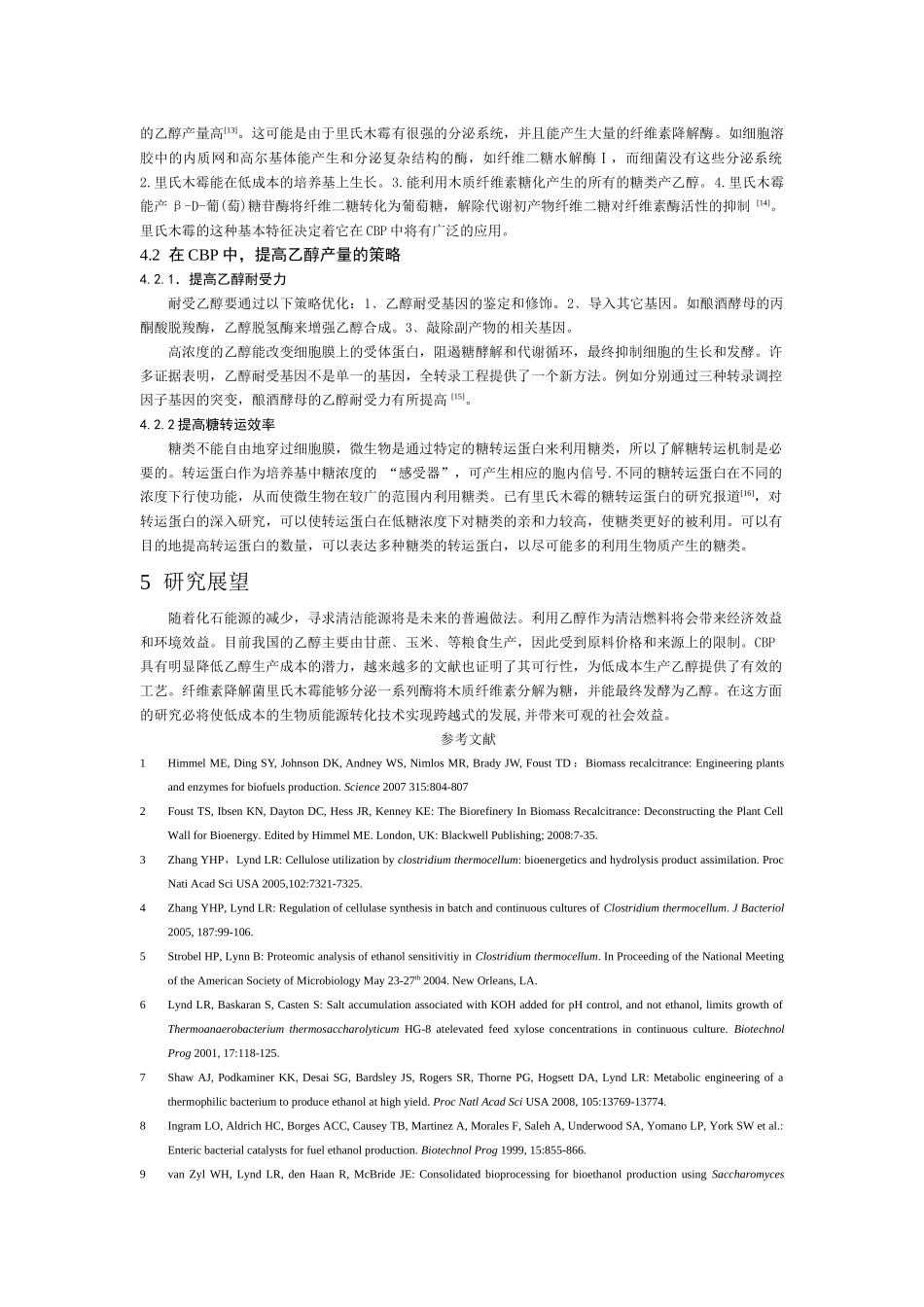联合生物加工工艺生产乙醇的展望 翁海波* 王志强 敬蔚然(1郑州大学生物工程系 郑州 450001)摘 要 利用生物能源转化技术生产乙醇能缓解非再生化石能源日渐枯竭带来的能源压力。来源广泛的纤维素将是很有潜力的生产乙醇原料。然而由于各种原因,当前乙醇生产成本较高,乙醇生产难以规模化。本文介绍的联合生物加工技术,一体化程度高,能有效降低生产成本,未来发展前景必定很广阔。关键词 生物能源转化; 联合生物加工; 纤维素Perspectives for the production of bioethanol using consolidated bioprocessingAbsract The ethanol production can lessening energy pressure by bioenergy conversion with the gradually exhaustion of non-renewable fossil energy today. Cellulose will be very potential raw in ethanol production because of extensive sources and lower price . The cost of practical production is high today du to all kinds of reasons, which are also the reasons why the ethanol production cannot be applicable in factory. The processes consolidated bioprocessing (CBP) – featuring cellulase production, cellulose hydrolysis and fermentation in one step– is an alternative approach with outstanding potential.Key words bioenergy conversion; consolidated bioprocessing; cellulose1 介绍能源是人类社会赖以生存和发展的重要物质基础。随着世界人口的增加以及各国工业化水平的提升,整个社会对能源的需求量与日俱增。应用生物能源转化技术可将生物质转变为清洁能源,能缓解石油、天然气等不可再生化石能源日渐枯竭带来的能源压力。目前生物转化使用的原料是玉米等粮食作物,但是这些原料的大量使用会影响到粮食安全,所以秸秆、麸皮、锯木粉等农业、工业废弃物等含有大量的木质纤维素,将是很有潜力的乙醇发酵原料。另外,生物燃料的生产过程中,纤维素的预处理和纤维素酶的生产成本较高[1,2] 。因此减少预处理,增强纤维素酶的活性,提高发酵产物的产量和纯度,减少中间环节也是降低生产成本的途径。联合生物加工(consolidated bioprocessing,CBP)不包括纤维素酶的生产和分离过程,而是把糖化和发酵结合到由微生物介导的一个反应体系中,因此与其它工艺过程相比较 ...


